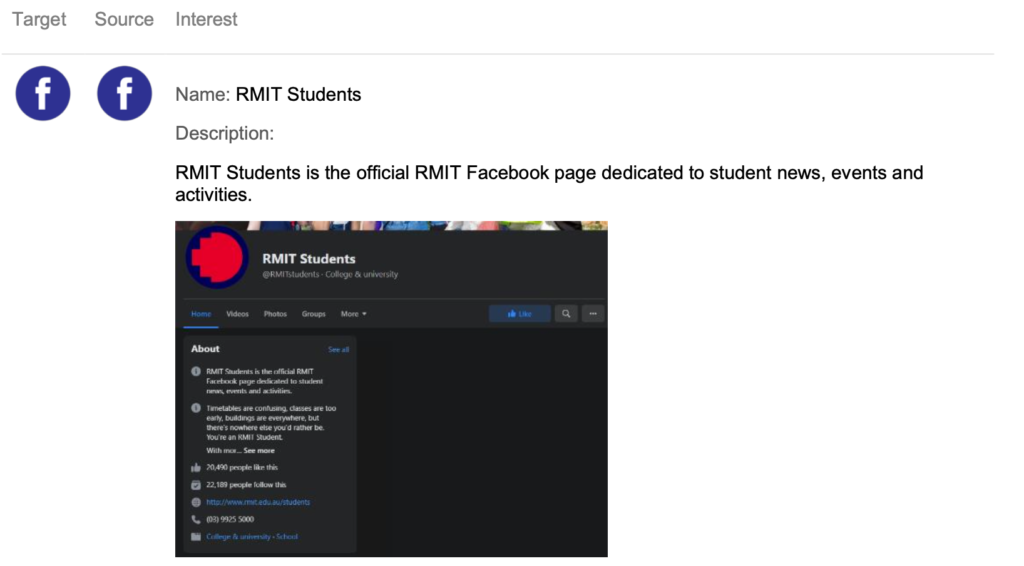Across the thousands of digital footprint checks conducted by CheckSocial, a staggering 20% of candidates have shown red flags in their online activity. That’s 1 in 5 who displayed behaviours indicating them as a potential bad hire.
Further still, 10% of the candidates checked have been considered as high-risk hires. Their behaviour on websites, forums and social media indicated a potential to put your organisation at risk of workplace harassment, violence and other damaging activities.
In 2022 we’re witnessing a renewed focus on workplace culture, with more organisations than ever reviewing their hiring process with the goal of assessing cultural fit to prevent bad hires.
In the past, there have been few metrics available to HR professionals to determine cultural fit – until now.
At CheckSocial, our digital footprint checks use cultural fit indicators to give a more complete image of your candidates’ attitudes, interests, values and behaviours.
This blog post explains what these indicators are, examples of the types of content they flag, the insights they give, and how they can be used to protect your organisation and build a workforce you can trust.
What are cultural fit indicators?
Cultural fit indicators are a group of behaviours the CheckSocial platform looks for when undertaking a digital footprint check.
If a candidate is found to be engaging in undesirable behaviour online, the report will highlight each incident to inform your hiring decision and help you prevent the cultural, financial and reputational damage associated with bad hires.
The cultural fit indicators we use are:
- Discriminatory behaviours
- Unprofessional behaviour
- Criminal history and conduct
When an indicator is found by our powerful AI technology, it is reviewed by our expert analysts who:
- Determine if the content belongs to the candidate
- Classify the content
- Rate the seriousness of the content
- Outline their findings within the Cultural Fit Assessment section of the report
Cultural fit indicators are flexible. You can decide to exclude some from your reports, or request additional indicators to suit your organisation’s needs.
To demonstrate the types of content found by digital footprint checks, we have broken down our indicators further below, with examples of content that would be flagged within each.
1. Discriminatory behaviours
Everyone has the right to a workplace that is free of discrimination, where diversity is understood and valued by all employees.
Organisations that value diversity, equity and inclusion (DEI) can foster an open and accepting environment, by proactively avoiding candidates who engage in discriminatory behaviours.
A digital footprint check will flag if your candidates’ online activity includes indications of:
- Sexism
- Homophobia and transphobia
- Ableism
- Hate speech
|
Examples of discriminatory indicators: 1. An employee of The Royal Melbourne Hospital was fired after making an anti-semitic comment on social media. The woman said that a group of Jewish Orthodox revellers, who held an illegal party during the Melbourne lockdown, should be “put in the gas chamber”. 2. A top executive at Condé Nast (owner of brands such as Vogue, GQ and Vanity Fair) was replaced when a series of his racist and sexist tweets surfaced. |
Controversies like the above examples are becoming more commonplace.
But newsworthy stories aside; all organisations should be actively avoiding employees who exhibit these behaviours. Not only do they pose a risk to your organisation’s reputation, they are not conducive to a safe and healthy workplace.
2. Unprofessional behaviours
A healthy workplace culture is made up of employees who have respectful, supportive and energising relationships with their team members.
Unfortunately, employees who display unprofessional behaviour can disrupt this balance, cause conflict with others and damage the reputation of your organisation.
A digital footprint check will flag your candidates’ online activity if it includes indications of:
- Online bullying
- Bad mouthing employers or coworkers
- Strong language
- Explicit content
- Substance abuse
|
Examples of unprofessional indicators: 1. The former Director of Strategy from PayPal took to Twitter to insult his colleagues, referring to one as a “useless middle manager” and “piece of ****”. PayPal later responded with, “Rakesh Agrawal is no longer with the company. Treat everyone with respect. No excuses. PayPal has zero tolerance.” 2. A software company employee was fired after cyberbullying media personality Clementine Ford on social media. In a video response on Facebook, the company’s Senior VP of Culture and Inclusion stated that “it’s important to me that everyone in our community and team are safe and supported, and acting in a way that aligns with our internal values…. There is no place for those sorts of behaviours at Timely, ever.” |
3. Criminal history and conduct
The CheckSocial platform is capable of flagging indications of a candidate’s criminal behaviours that may be valid to their employment.
As unbelievable as it seems to most, people who commit crimes, convicted or not, often talk about them online, whether on the dark web, forums and even publicly on social media.
A digital footprint check will flag if your candidate shows indications of:
- Fraud
- Violence
- Cyber Crime
- Other potential criminal activity
|
Examples of criminal indicators: 1. A police officer who claimed they were acting in self-defence when they threw a boot at a hospital worker told a different story with a Facebook post saying, “I threw my boot at him, Jerry Springer style, and nailed him in the face. It broke his glasses and cut his face and bruised it up real good.”The police officer also referred to themselves as an “Official Bum Roller”, referencing violence against homeless people, and posted a photo of a small black boy surrounded by police officers and the comment, “Quick . . . sprinkle some crack on him!” 2. An Instagram influencer was recently found to be helping run a business distributing fraudulent COVID-19 vaccination cards. Thirteen others allegedly working with the influencer were believed to be frontline workers such as hospital and nursing home employees. |
Other candidate insights found through digital footprint checks
The good news is, it’s not all doom and gloom.
To add further value, our digital footprint checks also provide valuable insights into your candidates’ interests, awards, employment history and education.
This may include details of social groups they are a part of, events they have been interested in, professional interests and more.
|
Examples of candidate insights: The below is an example of an educational insight on a candidate reviewed by a digital footprint check. |
What is excluded from digital footprint checks?
Digital footprint checks are capable of providing powerful insights into who your candidate truly is.
At CheckSocial we feel strongly that hiring for cultural fit is about hiring people whose personal values and behaviours are aligned with your organisation’s, rather than hiring a homogenous group of employees.
To reflect this, we ensure our reports also protect your candidate’s privacy and prevent them from being discriminated against.
We do this by:
- Obtaining consent to conduct checks
- Only accessing publicly available information. This includes posts, comments, mentions and reactions such as likes and laugh reactions
- Never using any form of hacking or deceptive methods to obtain data
- Excluding protected attributes from reports, such as race, religion and sexuality.
The above measures ensure our checks are compliant, that your candidates have a positive recruitment experience and avoid the potential for bias or discrimination.
What should employers do with their report findings?
Our reports do not provide direct advice on whether a candidate is employable.
Rather, our cultural fit indicators flag candidate behaviour that indicates a potential risk to your organisation.
This gives your HR team the metrics needed to assess candidates against your values, code of conduct and relevant policies, such as a social media policy.
There may also be other factors to consider, such as the age of the content found and the seriousness of the findings, which is indicated with each finding’s impact rating.
After the report is reviewed, any findings can be raised with your candidates to discuss your concerns ahead of any potential employment.
Integrating digital footprint checks into the hiring process
Red flags in your candidates’ attitudes, values and behaviours are often overlooked by traditional background checks and screening processes.
By integrating digital footprint checks into your hiring process, you can screen your candidates for cultural fit to avoid the wrong hiring decision and significant costs to your organisation.
Used in conjunction with the other risk management measures that make up your hiring process, such as interviews and reference checks, our reports provide the insights needed to form a complete view of your candidate.
Deciding on which point of the hiring process you conduct digital footprint checks depends on the needs of your organisation. We recommend either conducting them on shortlisted applicants ahead of interviews or at the time of reference checking your preferred candidates.
For more examples of the content found by digital footprint checks, download our free sample report today.




